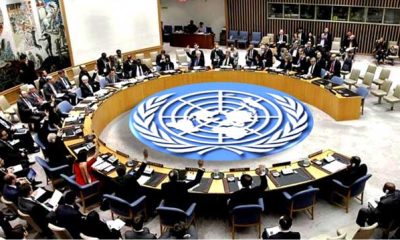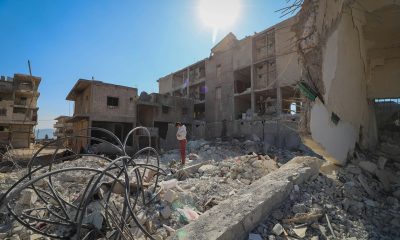Top Stories
Strategic Risks: What a U.S. Strike on Iran Could Trigger

What’s at Stake If the US Strike on Iran?
With B-2 stealth bombers now positioned in Guam and possibly Diego Garcia, speculation is rising about a potential preemptive strike on Iranian nuclear facilities. But what would such an attack trigger?
President Trump has reportedly entered a two-week window to decide whether to approve a limited strike targeting Iran’s deeply buried Fordow enrichment facility.
While the military option remains on the table, analysts warn that a strike could spiral into a full-blown regional conflict.
Read Also: U.S. Deploys B-2 Bombers Amid Iran Tensions →
🧨 Iran’s Likely Response
If the U.S. strikes Iranian territory — even a single precision facility like Fordow — Tehran is expected to retaliate with:
-
Missile attacks on U.S. bases in Iraq, Syria, and the Gulf region
-
Naval mine operations in the Strait of Hormuz, disrupting global oil supply
-
Drone strikes and proxy militia action targeting U.S. allies, especially Israel and Saudi Arabia
-
Cyber attacks on American infrastructure and defense networks
Iran has already placed its Revolutionary Guard units on heightened alert, and Supreme Leader Khamenei has reportedly issued contingency succession plans — a signal of preparation for escalation.
🧱 Can the U.S. Strike Fordow Successfully?
❗ Challenges of Hitting Fordow:
| Challenge | Explanation |
|---|---|
| Deep underground | Fordow is buried beneath 80 meters of rock and reinforced concrete |
| Heavily defended | Surrounded by advanced air defense systems and layered bunkers |
| Civilian proximity | Located near the city of Qom, raising the risk of collateral damage |
| Requires precision | Only GBU-57 MOPs (Massive Ordnance Penetrators) can potentially damage it |
Even if the U.S. succeeds in damaging Fordow, Iran may accelerate other enrichment efforts — leading to an arms race instead of disarmament.
🌍 Regional Domino Effect
Military analysts agree that even a limited U.S. strike would be seen across the Middle East as a declaration of war. Possible fallout includes:
-
Hezbollah and Houthis launching retaliatory attacks
-
Israeli cities under missile fire
-
Oil prices skyrocketing past $100/barrel
-
Disruption of global shipping routes via Hormuz
-
Collapse of the remaining JCPOA diplomacy
Furthermore, a U.S. ground presence would likely be expanded — despite American reluctance for another drawn-out Middle Eastern war.
🕊️ Is Diplomacy Still an Option?
Yes — for now.
The U.S. State Department has confirmed that backchannel diplomacy continues with European partners mediating indirect communication with Tehran. Meanwhile, U.N. observers are urging restraint from all parties.
The Department of Defense emphasized in its latest release:
“The U.S. remains committed to de-escalation while maintaining all options to protect its national security.”
→ Source: U.S. Department of Defense – Newsroom
Want to understand the full picture behind the military buildup?
👉 Check our full report: U.S. Deploys B-2 Bombers to Guam
📌 Summary Table
| Factor | Status |
|---|---|
| Trump’s decision | Expected within 2 weeks |
| Fordow threat level | High-value target, extremely fortified |
| Iranian response | Multi-front retaliation likely |
| Regional risks | Conflict could destabilize Gulf, spike oil, harm civilians |
| Global implications | Economic impact, renewed nuclear race, possible NATO involvement |
📢 Conclusion
The deployment of B-2 bombers is not just posturing—it’s part of a high-stakes chess game with global implications. Whether diplomacy can outpace escalation will depend on the choices made in Washington and Tehran over the coming days.
Stay informed on verified developments at defense.gov















